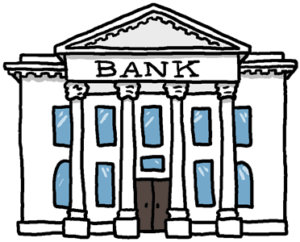 Banking is an essential part of life once you become an adult, but there are a lot of things to consider when choosing a bank. You have multiple options for types of institutions alone including national banks, credit unions, community banks or online banks. Then you have all the different things that are offered by each institution. If you still have the account you opened in college, it may be time to take another look and see if that account is still meeting your needs. There might be a better option out there for you! Let’s break down what to look for in a new bank into two major areas: features and fees.
Banking is an essential part of life once you become an adult, but there are a lot of things to consider when choosing a bank. You have multiple options for types of institutions alone including national banks, credit unions, community banks or online banks. Then you have all the different things that are offered by each institution. If you still have the account you opened in college, it may be time to take another look and see if that account is still meeting your needs. There might be a better option out there for you! Let’s break down what to look for in a new bank into two major areas: features and fees.
Features
- Account Offerings – Find a bank that fits your lifestyle. If you have multiple savings goals, find a bank that lets you open and name separate accounts. If you are an entrepreneur trying to build a business, maybe you need a bank that has resources for business checking.
- Location – Most Millennials would prefer to do as much as possible online, but there may be things you actually need to go to a bank for such as certain deposits and withdraws or changes to accounts. Think about where the bank has locations to do these kinds of things or if you need to learn more about the basics of banking.
- Technology – This is an obvious one for Millennials. Does the bank have an app? Are there online banking features? See if the bank has the digital features you want for mobile check deposit, online bill pay, etc. Does it offer you the ability to sign up for alerts for low balance or fraud?
- Security – Make sure the bank offers some sort of protection for your savings either through the National Credit Union Administration or Federal Deposit Insurance Corp.
Fees
Like many things in the financial world, fees are part of the territory, but you shouldn’t waste money on unnecessary charges at a bank. For example, why pay $100 a year for a checking account when you could pay $30 or $5 or nothing at all. Different types of accounts may charge something different but if you know what you need, you might be able to eliminate things like monthly service fees. Don’t be afraid to ask the bank as well as there might be a way to waive them. Also, see if the bank charges out-of-network ATM fees. Some banks may not and others may refund you the fees.
Pay attention to overdraft fees. Make sure you know what the bank will charge you if you do overdraft. Many younger Millennials are just getting started in their careers and managing their own personal finances so having some overdraft protection may be helpful. Know what the cost is for overdraft protection or have a backup plan. Some banks may not charge you anything to link your checking account to a savings account as a backup if your checking account runs out of money.
Finally, don’t forget about online banks and credit unions. Because online banks have fewer physical branches, their operating costs may be lower and that savings could be passed on to you. They may also have better rates for savers. It may take a little more time to do the research on credit unions but it might be the right fit for you.
Like many things in personal finance, if you know what you need then you can find the right fit for you. There are plenty of options and ones that won’t cost you an arm and a leg to do basic banking. If you want to learn more about personal finance, check out our book, The Millennial Money Fix, which you can pre-order now.
Related Articles
[Bankrate] 7 Tips for Millennials Choosing a New Bank
[Mic.com] 10 Easy Ways to Save $10 Every Single Day: That’s an Extra $3,650 a Year
